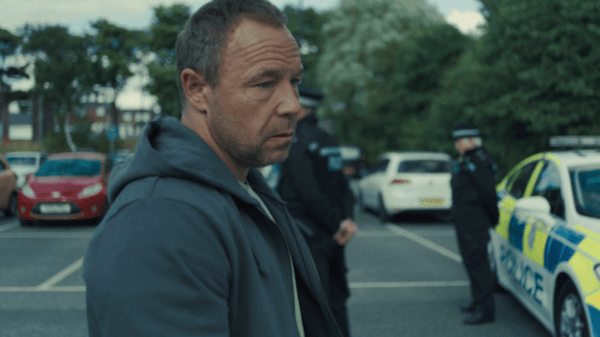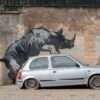London Zoo has recently taken the decision to remove a piece of artwork by the renowned street artist Banksy, citing concerns for its “safekeeping.” The artwork, which depicted a gorilla, had become a notable attraction within the zoo, drawing visitors as much for its artistic value as for its origins with the elusive Banksy. However, the decision to remove the original piece has sparked discussions about the preservation of art in public spaces and the challenges of maintaining works that hold significant cultural value.
Banksy’s work, often characterized by its thought-provoking and sometimes controversial nature, had been on display at London Zoo for some time. The gorilla image, true to Banksy’s style, blended a playful visual with underlying commentary, making it a fitting, if unconventional, addition to the zoo’s environment. Yet, the zoo authorities determined that the piece’s growing fame and the inherent risks of its outdoor placement necessitated its removal. To ensure the artwork’s preservation, they opted to replace it with a reproduction.
In place of the original Banksy, a reproduction now stands, accompanied by a sign that reads, “Banksy woz ere.” This tongue-in-cheek message, echoing the graffiti tag “Kilroy was here,” maintains a connection to the artist’s irreverent style, while also signaling to visitors that the piece they see is no longer the authentic work. The zoo’s decision reflects a broader trend of institutions grappling with how to balance the public display of valuable art with the need to protect it from damage or theft.
While some visitors may be disappointed by the absence of the original piece, the zoo has emphasized that the move was necessary to safeguard the work for future generations. By removing the original, London Zoo aims to prevent potential harm or deterioration that could result from its exposure to the elements or from possible vandalism. The reproduction allows the artwork to continue to be appreciated in its intended setting, without the associated risks to the original.
The sign, “Banksy woz ere,” serves not only as a playful nod to the artist but also as a reminder of the fleeting nature of street art and the challenges that come with preserving it. Banksy’s works, often created in public spaces without permission, are subject to the whims of time, weather, and human interaction. Their temporary nature is part of their allure, but it also poses a dilemma for those tasked with their preservation.
In the case of London Zoo, the decision to remove the original Banksy artwork underscores the tension between public access and preservation. While the zoo has made efforts to keep the spirit of the piece alive through the reproduction, the move raises questions about how best to handle works by street artists like Banksy, whose creations are inherently ephemeral yet increasingly valuable.
As Banksy’s art continues to captivate audiences worldwide, the London Zoo’s approach may serve as a precedent for other institutions facing similar challenges. The balance between making art accessible and ensuring its longevity is a delicate one, and as the story of the gorilla artwork at London Zoo shows, sometimes the safest way to protect a piece is to remove it from the public eye altogether.



















































